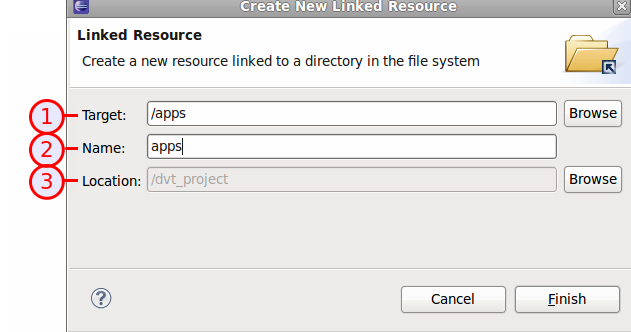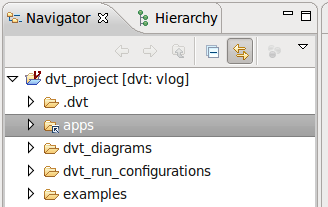Linked Resources
Linked resources are very similar with file system links, except they are registered in the .project file, not created on the disk.
To create a linked resource, right click on the project in the Project Explorer view and select from the pop-up menu New > Linked Resource. In the wizard you must specify the path the link will point to (for example /apps) and the linked directory name (for example apps):

Target: the file system path the link will point to;
Name: the linked directory’s name;
Location: location (inside the selected project) where the link directory will be created.
Tip
You can also use system variables in the path, for instance:
${DVT_ENV-SYSTEM_VARIABLE_NAME}/work equivalent to
$SYSTEM_VARIABLE_NAME/work in a terminal. This way you can share the project with your team and the linked folders will work seamlessly.
Note
When you press Finish, if the directory the link points to is too big (for example it has more than 3000 children), a Resource Filter dialog will pop-up. You can use it to exclude those children that you don’t need and that may slow down the platform (you can find out more about it at How to create resource filters ?).
Linked resources will appear in the Navigator with a small “link” icon:

Tip
You can also use drag & drop from a filesystem navigator (like Nautilus in Gnome, Dolphin in KDE or Explorer in Windows): drag the external folder and drop it on the desired target location (Project or Folder) in the Navigator View. In the dialog that pops-up specify that you want to “Link to files and folders”. A linked resource will be automatically created.